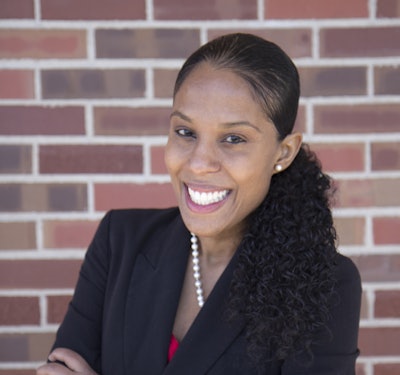March 12, 2020. The last time my students and I physically shared classroom space. We were moving into spring break—a week off from coursework and the exciting opportunity to return re-energized to further discuss student development theories. Specifically in this course, the midpoint in the semester is when students started “to get it”; to reach what, for many students, were new “ah-ha” moments that accompanied the understanding of development theories.
As a faculty member, my biggest concern was the online (re)creation of a deeply engaged and rich environment, while simultaneously supporting students battling various challenges due to COVID-19 including but not limited to the loss of jobs, mental health conditions, and deaths of family members. In the shift to remote learning, I was intentional about student check-ins, providing space for them to process feelings associated with, and impacts of the pandemic—personally, professionally, and academically. One recurring classroom conversation was the lack of compassion experienced by many students, professional staff, and faculty across higher education. We were collectively astonished at the lack of humanity during a time of crisis. After several discussions about the benefits of exercising compassion, humanity, and grace (noting the importance of those components to the learning process), I invited my class to co-author this op-ed with me. It was obvious I was not the only one struggling with the idea that compassion—a human gesture incorporating love, grace, kindness, understanding, and patience—needed to be embodied and executed. While compassion is crucial, we call for the adoption of Hao’s (2011) Critical Compassionate Pedagogy, a commitment to openly critiquing institutionalized policies and practices, as well as engaging in self-reflexivity while centering compassion as a means of reshaping higher education, our communities, our students, and ourselves.
In the following sections, we reflect on our commitment and highlight the transferability of pedagogy to practice outside the classroom. We encourage education stakeholders to (re)consider ways to move toward embodying critical compassion in academic environments, noting that while exercising compassion is important during a pandemic, it should not be limited to moments of crisis. To create a critical compassionate environment is to create one in which open communication is valued and students, faculty, and staff are free to be their authentic selves.
As we engage in efforts to create campus environments that embrace critical compassionate pedagogy, we provide the following questions as a foundation to help move us forward: (a) How do we operationalize compassion in higher education? (b) How do we create a culture of compassion both inside and outside the classroom? (c) How do we challenge educational systems that view compassion as weakness and/or a threat to rigor? (d) How do we prioritize the overall well-being and holistic development of our students in the face of a crisis? And lastly, (e) How do we commit to ALWAYS humanize learning?
Learning from the Pause: Compassion in a Pandemic
The current pandemic is a crash course in pedagogical flexibility for all in higher education. What previously was established as “normal life” is now on indefinite pause. Educators are forced to rethink syllabi and methods of instruction, while students are figuring out how to survive while remaining successful with new ways of learning. Our resiliency is being tested with added stressors of working from home, losing jobs, facilitating children’s education, having limited access to the outside world— all while experiencing trauma of a life-threatening virus. Our daily routines have been disrupted, small businesses are struggling more than ever, and some corporations are marketing the pandemic to their advantage. Is this our new society? Take-out food, staying six feet apart, wearing masks, trucks with refrigerators being used to store bodies at major hospitals in highly impacted areas—and still, homework due at midnight.
 Dr. Raquel Wright-Mair
Dr. Raquel Wright-MairThe overarching paradigm of higher education upholds dominant ideologies of individualism and meritocracy, seeking to maintain oppressive hierarchies. Such structures have required perfectionism and hyper productivity even under the current pressures of a pandemic. During this time, inequities faced in the academy and society have been heightened, reinforcing power and privilege across institutional structures.
The need for critical compassionate pedagogy is essential and must be prioritized when working in the academy. Critical compassionate pedagogy seeks to listen, understand, empathize, and take action towards creating more equitable structures in education. An ethic of care and attentiveness to others starts with our own cognitive and psycho-emotional well-being and engagement in reflexive practices of how we show up at home, work, and in the classroom with particular focus on our positionalities. Critical compassionate pedagogy requires us to extend open-hearted and open-minded compassion towards others, and recognize the multiplicity of hardships, and the intersections of oppression that individuals face. It should not take a pandemic for society to recognize the necessity of grace, compassion, and kindness. Rather, critical compassionate pedagogy should be utilized to create more equitable and honest spaces for participation, learning, and growth for all.
Our sense of normalcy has dramatically shifted—in this redefinition, we should insist on no longer persisting with standards of the past. As we experience new changes, higher education can learn from the pause. We must sit with our differences and learn the power of vulnerability in sharing our experiences. We must also recognize how current policies and practices are working against equitable outcomes and move towards embodying a compassionate pedagogy.
Processing Loss
The university environment should be a place of solace, fostering a sense of community to push the limits of knowledge. Unprecedented changes have ultimately affected the abilities of academic community members to succeed. Not having graduation ceremonies, human connection, and other shared memories was a loss for many and it is important to have a space to process and grieve. Open invitations by faculty and administrators to debrief the magnitude of current realities and process raw feelings have led to a sense of validation and affirmation for many. Through honest, transparent, and personal interactions, critical compassionate spaces have been created to help individuals cope and grieve lost experiences and opportunities.
However, there is more than simply missing out when it comes to processing loss. Marginalized populations have had to process hypervisibility and adapt to a new reality around them without crucial support structures. Many are experiencing the abrupt loss of important resources instrumental to their wellbeing and success. Community members have been left to navigate a virtual university, often without adequate support and resources. Having community and resources to help process loss is central to healing and surviving. When this does not occur it is detrimental and we risk not acknowledging individuals:
“You See Me”
Do you remember me?
Remember when I spoke to you and expressed the struggles going on with me?
Or that one time when I had that anxiety attack in the middle of class,
You told me, “It’s okay, go take five minutes to yourself and come back to reconvene.”
Or maybe you remember when I told you that my father just died in front of me from COVID-19.
Not getting a chance to hold him for one last time.
Or when my brothers and sisters are getting shot and killed from the violence surrounding me.
Or my mother crying to me when she lost her job and couldn’t help to pay for me to sit in these seats.
Well, actually…No.
You don’t even know me but you see me.
Physically behind this computer screen, with my covered background hiding my reality.
Missing an online lesson because I have no access to Wi-Fi and couldn’t afford to pay the electricity.
Having to mute the microphone because of the police sirens in my community.
My parents outside, fighting about feeding my family and figuring out how to make ends meet.
But still. No compassion.
You see me.
But you still failed me.
Rethinking Compassion in the Academy
The academy is often too unwilling to acknowledge the need to shift dominant ways of understanding in higher education. Becoming comfortable with the uncomfortable is easier said than done. The unwelcoming academy could implement more humanity, kindness and equity. Tomorrow is unknown, but leading with compassion, flexibility, and understanding is what we need to help each other heal in crisis. There is no better time than the present to implement changes and commit personally to work towards a more loving, understanding, and equitable approach to teaching and higher education.
We urge higher education stakeholders to consider the following action items, as they prioritize our call to center critical compassion:
One: Redefine Expectations of Productivity
The effort that individuals are putting in may look different now than it did when we were on campus. Different does not mean less than. Individuals’ support systems have completely changed, for better or for worse. Everyone is doing the best they can at this given time; effort is demonstrated differently when people are experiencing crisis and trauma. Accept that output from others looks different now, honor what is being contributed and understand that some people are not okay.
Two: Be Proactive and Attentive
To provide proactive and intentional support is to recognize and respect an individual’s needs. Take the time to be fully present and engaged. Concentrate on communication (verbal and non-verbal) and be prepared to address them in the moment as needed. Provide students and colleagues an additional level of honest, unscripted support.
Three: Lead with Love
Actions and interpersonal interactions are opportunities to demonstrate transparent and caring leadership. How departments interact with and support faculty, staff, and students impacts relationships and connections. Reflect on what you believe truly matters in this moment, and examine what you are willing to sacrifice in order to create a path toward more equitable campus environments. When making decisions, think critically about the impact on marginalized populations within the academic community who are often excluded from decision-making processes. Reconsider and (re)evaluate decisions from a place of love, remembering the lack of it in the academy. To lead with love means to lead with both compassion and critical action towards creating equitable educational environments.
Four: Use your Privilege
U.S. higher education has long been plagued with inequities, and the COVID-19 pandemic has exacerbated systemic racism and brought it into full view. As educators, it is crucial that we recognize structures of inequality in our society, and acknowledge the roles we play in upholding them. We must leverage the various privileges we hold as we advocate for change toward equity, and practice humility as we learn to be more critical compassionate educators.
Higher education cannot function effectively without centering critical compassion and showing up with heart. Critical compassionate pedagogy throughout the field, in and out of the classroom, will develop a generation of faculty and practitioners who are able to engage on a deeper and more meaningful level. Leading with critical compassion and vulnerability may be the only way the academy will stay relevant as our society is forced to triage how they will use scarce resources and radically re-envision the delivery of knowledge in a new climate fraught with fear and uncertainty. Now more than ever we should focus on, and execute criticality, compassion, and love.
References
Hao, R. N. (2011). Critical compassionate pedagogy and the teacher’s role in first‐generation student success. New Directions for Teaching and Learning, 2011(127), 91-98.
Dr. Raquel Wright-Mair, is an assistant professor of Higher Education at Rowan University. You can follow her on Twitter @DrRaquelWrightM.
Dr. Wright-Mair collaborated on this article with her following students listed here: Lauranne Adriano, Jason Artrip, Alana Brown, Marina Ceneviva, Samantha Contrini, Nicole C. Kides, Gabrielle A. McAllaster, Stacie Mori, Lynn Oberkehr and Anna Pietrzak.















